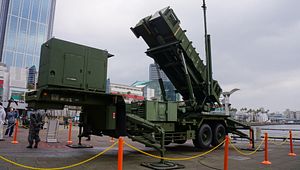Japan is understandably not happy about North Korea’s latest ballistic missile launch, which, for the first time, resulted in a splashdown inside Japan’s exclusive economic zone (EEZ).
As I discussed last week, Japanese Prime Minister Shinzo Abe minced no words, describing the launch as a “grave threat” and “an outrageous act that cannot be tolerated.”
Tokyo has long watched North Korean ballistic missiles fly over and into the Sea of Japan, but last week’s launch along with the ever-hastening pace of North Korean missile testing may give impetus to a change in Japanese policies.
Over the weekend, Japan’s Kyodo news agency reported that a Japanese government source had revealed that Tokyo may soon put in place an open-ended standing order to the Self-Defense Forces to intercept any North Korean ballistic missile “heading toward” its territory.
The specific change in policy would be the adoption of a standing order. Previously, Japan has given its defense forces orders to intercept on a case-by-case basis.
For North Korea’s telegraphed satellite tests (the most recent of which took place in February 2016), Tokyo has reacted to by issuing intercept orders well in advance.
Tokyo also has also moved to specifically lift intercept orders, based on assessments and expectations of future North Korean missile testing. For example, following the spate of North Korean Musudan intermediate-range ballistic missile testing in early June, Tokyo lifted an intercept order.
Because North Korea does not provide transparency or file a Notice to Airmen (NOTAM) regarding its ballistic missile testing, Japan is stuck issuing intercept orders based on incomplete information. For instance, Kyodo reports that no intercept order was in place during last week’s Rodong test.
When intercept orders are issued, Japan’s Self-Defense Forces operationalize two specific capabilities: The Maritime Self-Defense Force places its SM-3 Aegis-equipped guided missile destroyers on alert while the Air Self-Defense Force readies Patriot Advanced Capability-3 (PAC-3) missile interceptors in and around Tokyo.
There are limits to what Japan’s standing intercept orders could and couldn’t do. For instance, the PAC-3 interceptors in and around Tokyo would be unable to intercept anything but a ballistic or cruise missile in its terminal phase (i.e., when the missile is on its way down, toward its target).
The deployment of Aegis-equipped destroyers would be more likely to successfully intercept a terminal ballistic missile in the Sea of Japan, depriving North Korea of important test data about the missile’s terminal phase.
Because Pyongyang’s repeated testing has the dual purpose of signaling outwardly while gathering scientifically useful data, a standing intercept order by Japan may deter some forms of testing.
Japan’s consideration of an open-ended intercept order accompanies other important missile defense developments in Northeast Asia, including the South Korean decision to move ahead with the Terminal High Altitude Area Defense (THAAD) system and ongoing trilateral cooperation on missile defense between Japan, South Korea, and the United States.
Earlier this summer, for the first time ever, the three countries held a missile defense drill on the sidelines of the 2016 Rim of the Pacific naval exercise.

































